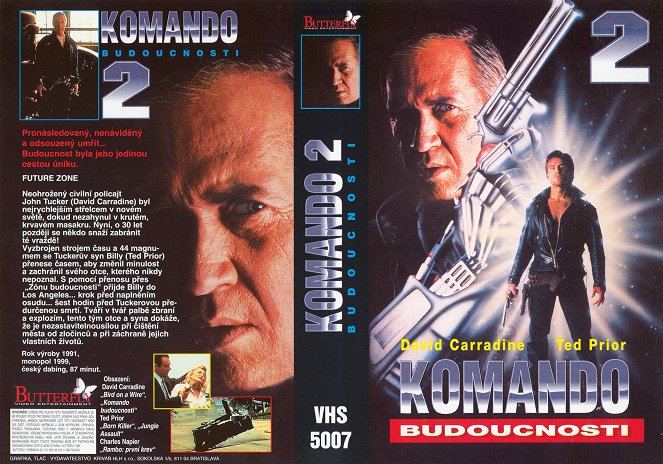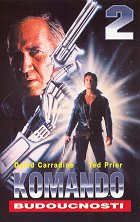Director:
David A. PriorGuión:
David A. PriorReparto:
David Carradine, Ted Prior, Patrick Culliton, Charles Napier, Jackson Bostwick, Renée Cline, Don Stewart, Ronald TaftSinopsis(1)
David Carradine reprises his Future Force role as legendary bounty hunter John Tucker, who's about to face the most dangerous ordeal of his career. But luckily, he's armed with his most powerful weapon yet - his grown son Billy, who has traveled back in time to save him from the city's most brutal gang of criminals. (texto oficial de la distribuidora)
Reseñas (1)
Despite everything, this film’s predecessor, Future Force, apparently made a decent amount of money, so the same team again set out into the city streets to play futuristic cowboys. The success of Future Force made it possible to slightly inflate the budget, which is reflected mainly in the fact that this time the shooting was done on a set that at least vaguely resembles a police station instead of a generic office space with the name of the organisation printed on a sheet of paper taped to the door. Similarly, the main protagonist got a complete jacket with sleeves instead of a sad denim vest. Obviously with an eye on a bigger cut of the box office, Carradine took a greater interest in the project and is thus less somnambulant. This is perhaps the greatest contribution of this then-wife, Gail Jensen, who, alongside the hero’s band of wives, also oversaw her own trashy train wreck as a producer for the co-production company David Carradine Entertainment. With a bigger budget, however, the naïve and amateurish charm characteristic of David A. Prior’s previous films is unfortunately lost, replaced by the boring dreck of his more generously financed (though still low-budget) projects of the first half of the 1990s. What connects this film with the earlier era is a small number of amusingly sloppy scenes, the lazy recycling of a few trick shots from Future Force and, mainly, the presence of the director’s brother Ted, who struts around through the whole film in a chic leather outfit with an annoyingly obvious gimmick. Prior’s drecky genius is manifested this time in the progressive original title, which instead of a conventional numeral comes with a variation on the preceding film’s title, which has become the fashion of mainstream film series in the new millennium. However, the most noteworthy aspect is the master’s more consistent use of western elements (from the stylish drawing of Colts to the climax, which progressively flips the dynamics of the legendary conclusion of the classic Shane) and the combining thereof with elements lifted from The Terminator and Back to the Future.
()
Galería (1)
Foto © Butterfly Video Entertainment

